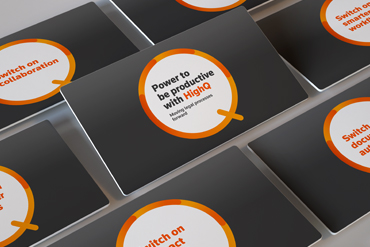Communication is the lifeblood of a legal practice. Contracts, lawsuits, and all other types of legal documents are constructed using carefully chosen and properly ordered words. Then there is the fundamentally crucial communication between lawyers and clients, and within the firm or legal department itself.
In the past few decades, much of that communication has shifted from face-to-face meetings and phone calls to online platforms. At the same time, more and more legal documents are being digitized and stored online. Digitization lets attorneys and law firm staffers quickly share information, both between themselves and with clients.
But too often, online communication breaks down. Email messages can be misinterpreted. Digitized documents can get lost in the numerous software platforms that legal professionals have to navigate. When that happens, productivity and efficiency all but evaporate. And these breakdowns are occurring just as law firms and legal departments face increasing pressure from clients to be more responsive and transparent — while also keeping their costs down and delivering high-quality work.
What the practice of law needs more than ever is integration — the ability to easily communicate across different platforms. Imagine moving from document drafting to contract review and execution without the time-consuming tedium and gear grinding that comes from launching multiple applications or sending files from one system to another.
A new white paper from Thomson Reuters titled “Working Together: How digital integration can optimize the practice of law” discusses how new technologies are arising and evolving in order to fulfill the promise of truly productive communication between platforms.
Connecting the points
The tech industry has generated numerous software platforms intended to make digital communications and collaboration more efficient. And legal practitioners have benefited. These point solutions have remarkable capabilities.
But they’re called “point solutions” because they typically address just one aspect of legal practice — eDiscovery, say, or analytics. In the vast majority of cases, these platforms don’t communicate with each other. And that means attorneys often find themselves switching from one platform to another in order to complete their work. Instead of saving time, this back-and-forth can actually slow things down as individual tasks get faster, but processes grow more cumbersome.
There are some interconnections between point solutions already. And they can be extremely useful. But to fulfill the promise of productivity and efficiency, technology needs to provide more “connectivity” to the lawyers and legal staffers who increasingly rely on digital tools. More communication, in short.
What does true integration look like?
Integration — a related term is interoperability — is an evolving cluster of digital technologies that seek to improve the ways law firms and legal departments work and collaborate. Its goals are to make workflows become more efficient and to help everyone involved in a legal matter more clearly understand their roles and responsibilities.
One platform that’s been designed to integrate legal workflow functions is HighQ, a SaaS (software-as-a-service) that provides cloud-based file sharing, team collaboration, document management, and client engagement software for legal practitioners. HighQ offers a single platform designed to allow firms and departments to collaborate more easily with clients and colleagues. And HighQ lets users easily link to the external platforms, such as Salesforce, Office 365, or an ERP application, that legal organizations rely on for other critical business functions.
HighQ is more than file sharing or cloud storage. It’s a productivity game changer and a user-friendly powerhouse built just for lawyers and their colleagues. In the next couple of posts, we’ll look at how legal organizations can create scalable workflow processes without having to call the IT department. We’ll also look at how the technologies that legal professionals use today can actually hinder collaboration — and how integrated systems can boost it.
Want to know more right now? You can download the free white paper here.











